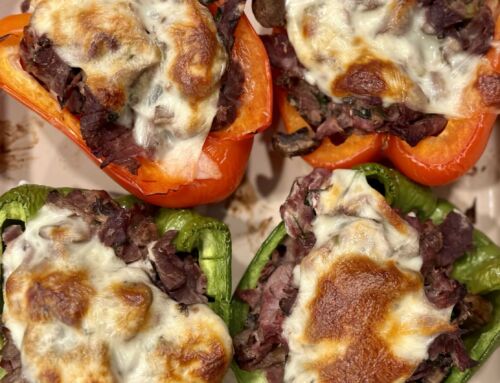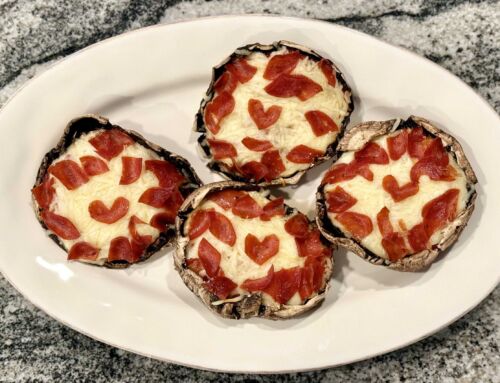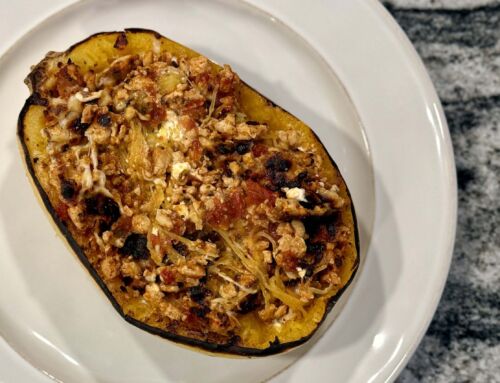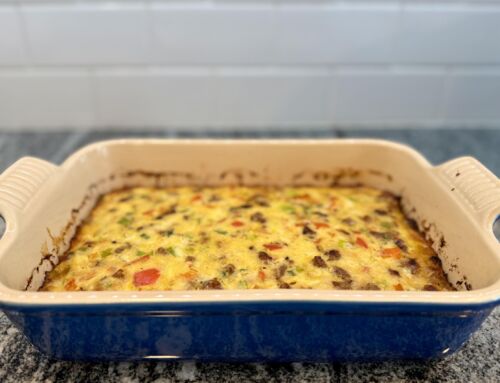You know when you can’t have something and you really want it? That’s pizza for me. Before I stopped eating wheat I wasn’t much of a pizza fan. I liked it but didn’t love it. The toppings were more appealing to me than the actual dough. But when you’re faced with a gluten-free crust, no matter how good it might be, it’s just not the same as one that is full of gluten. Ask Ed and he will tell you that pizza is absolutely one of his favorite foods.
 Since giving up wheat (so not quite gluten-free) in 2014, I’ve learned that I am able to tolerate European or small batch flour. It’s the genetically modified (GMO) flour that causes the inflammation that exacerbates the osteoarthritis in my hands. You can read more in my European Peasant Bread Revisited post from April, 2020.
Since giving up wheat (so not quite gluten-free) in 2014, I’ve learned that I am able to tolerate European or small batch flour. It’s the genetically modified (GMO) flour that causes the inflammation that exacerbates the osteoarthritis in my hands. You can read more in my European Peasant Bread Revisited post from April, 2020.
So why not make pizza at home with a small batch, non-GMO flour? This was one of our favorite go-to meals during Covid. Like the bread referenced above, this recipe follows Jeff Hertzberg, M.D. and Zoë François’ principles of Artisan Bread in Five Minutes a Day. When I say that this dough is easy to make, that’s an understatement. All you need to do is to mix water, yeast, salt, and flour in a container. Then, let it sit at room temperature for two hours and refrigerate it for at least three hours or preferably overnight. That’s it – no kneading or multiple rises.
The pizza sauce is also simple to make and comes together in about an hour. I use canned crushed tomatoes so there’s no need to purée after it’s cooked as it’s just the right consistency for this pizza. If you can find San Marzano (or San Marzano-like) crushed tomatoes they’re the best.
We tried various types of mozzarella from fresh (including mozzarella di bufala) to low moisture. We found that the low moisture – think ‘blocks’ of cheese you likely grew up on such as Polly-O – worked best. The reason is found in the name – fresh contains more water and makes the dough a bit soggy. We like Galbani Whole Milk but Wegmans Whole Milk also worked just fine.
We use our gas grill (Weber three burner) like a pizza oven. The key is preheating the pizza stone and grill with all burners on high for at least 30 minutes. The goal is to get the grill as hot as possible. As a result the pizza cooks in less than 10 minutes. Be sure to be quick when you open the lid to the grill as you want as little heat to escape as possible. Don’t worry if your pizza isn’t perfectly shaped when it goes onto the pizza stone – it will still taste great.
This is perfect for the summer when you don’t want to heat up your house by turning on the oven. Instead turn your grill into a pizza oven.
The smaller picture is a pizza that Ed had in Rome for lunch after we toured the Roman ruins. This pizza makes the list of the top five pizzas he’s ever had. You also get a glimpse of Eric and Genevieve S’s pizza – they were very happy with it, too. It didn’t hurt that we were in Rome!
| Classic Margherita Pizza on the Grill | Print |
- 1-3/4 cups lukewarm water (~ 100°F)
- 1-1/2 teaspoons granulated yeast (see Notes)
- 2 teaspoons kosher salt
- 3-3/4 cups all-purpose flour (see Notes)
- 1 28 ounce can of crushed tomatoes, preferably San Marzano
- 3 ounces tomato paste
- 2 cloves garlic, minced
- 2 teaspoons fresh oregano, chopped or ¾ teaspoon dried oregano
- 2 teaspoons fresh basil, chopped
- Kosher salt and freshly ground black pepper
- ~ 6 ounces mozzarella, sliced and cut in half
- 8 fresh basil leaves, whole, thinly slivered or torn
- Flour for pizza peel
- Thermometer
- 5-quart plastic container with lid
- Pizza peel (metal or wood)
- Dough scraper
- Spoon/Hand Method: Mix yeast, salt and water in a 5-quart plastic container with lid. Add flour and mix without kneading using a wooden spoon. You may need to use wet hands to incorporate the last bit of the flour. Cover (not airtight) and rest it at room temperature until the dough rises and collapses, about 2 hours. Refrigerate the dough covered (not airtight) and use over the next 14 days. You can use the dough immediately but it’s easier to work with when cold – I recommend at least 3 hours (and preferably overnight) in the refrigerator.
- Stand Mixer/Food Processor Method: Using a stand mixer fitted with a dough hook or a 14-cup food processor with dough attachment, mix yeast, salt and water in a 5-quart plastic container with lid. Add flour and mix without kneading. Transfer dough to a 5-quart plastic container with a lid. Cover (not airtight) and rest it at room temperature until the dough rises and collapses, about 2 hours. Refrigerate the dough covered (not airtight) and use over the next 14 days. You can use the dough immediately but it’s easier to work with when cold – I recommend at least 3 hours (and preferably overnight) in the refrigerator.
- You’ll want to use up the dough in 14 days. The longer the dough sits the more of a sourdough flavor it takes on. This recipe makes 2 pizzas.
- In a medium saucepan, stir tomatoes, tomato paste, garlic, oregano and basil. Season with kosher salt and freshly ground black pepper.
- Simmer uncovered over medium-low heat until sauce thickens, about an hour.
- Refrigerate for up to a week or freeze.
- Makes enough for about 6 pizzas (~ ⅓ cup sauce/pizza).
- Place a pizza stone on a gas grill grate. Turn all burners to high and close lid. Preheat for at least 30 minutes. You want the grill to be as hot as possible – preferably over 500°F.
- Flour a pizza peel and set aside.
- After 30 minutes, dust the surface of the dough with flour and use a serrated knife to cut dough in half (you have enough to make 2 pizzas). Dust with more flour and quickly shape it into a ball by stretching the surface of the dough all around to the bottom on all four sides, rotating the ball a quarter-turn as you go. It should be smooth on all sides although the bottom may look like a collection of bunched ends. Don’t worry as it will flatten as you roll it out. You do not need to let the dough rest before rolling it out.
- Flour a work surface. Using your hands and rolling pin, roll out dough, adding flour as needed. It may resist a bit – keep rolling. Use a dough scraper to unstick any dough. When done, the pizza should be about 12 inches round and ⅛" thick. Transfer to prepared pizza peel.
- Spread ⅓ cup pizza sauce to within one inch of the sides. Place cheese on top of sauce, leaving a bit of space in between.
- Slide pizza onto the preheated pizza stone. Place the tip of the peel near the back of the stone – close to where you want the far edge of the pizza to land. Give the peel a few quick forward-and-back jiggles and pull it sharply out from under the pizza. (Don’t worry if it doesn’t end up looking perfectly round as it will still taste good!)
- Immediately close the grill lid to prevent the heat from escaping. Set timer for 4 minutes. Rotate pizza halfway around so that it cooks evenly. Set timer for another 4 minutes. Pizza is done when the bottom of the crust is cooked through and sounds slightly hollow when tapped. It may take an additional 2 minutes (10 minutes total cooking time). Note that grills may vary – if your grill is a lot hotter than 500°F you may only need 6 minutes total cooking time.
- Allow pizza to cool slightly.
- Sprinkle with fresh basil and cut into slices.
Source: Adapted from Jeff Hertzberg, M.D. and Zoë François’ Artisan Pizza and Flatbread in Five Minutes a Day (2011)







Leave A Comment